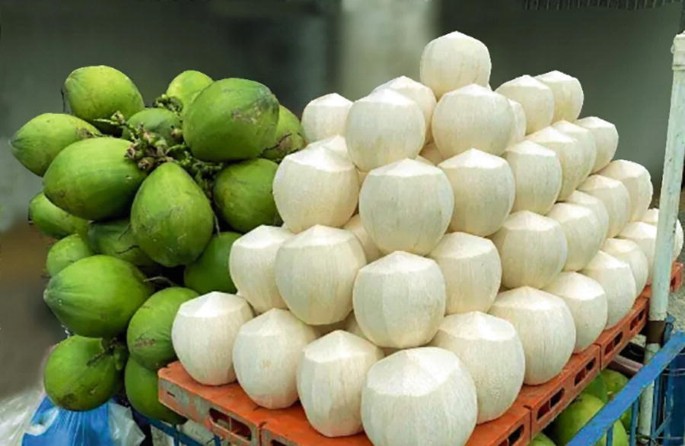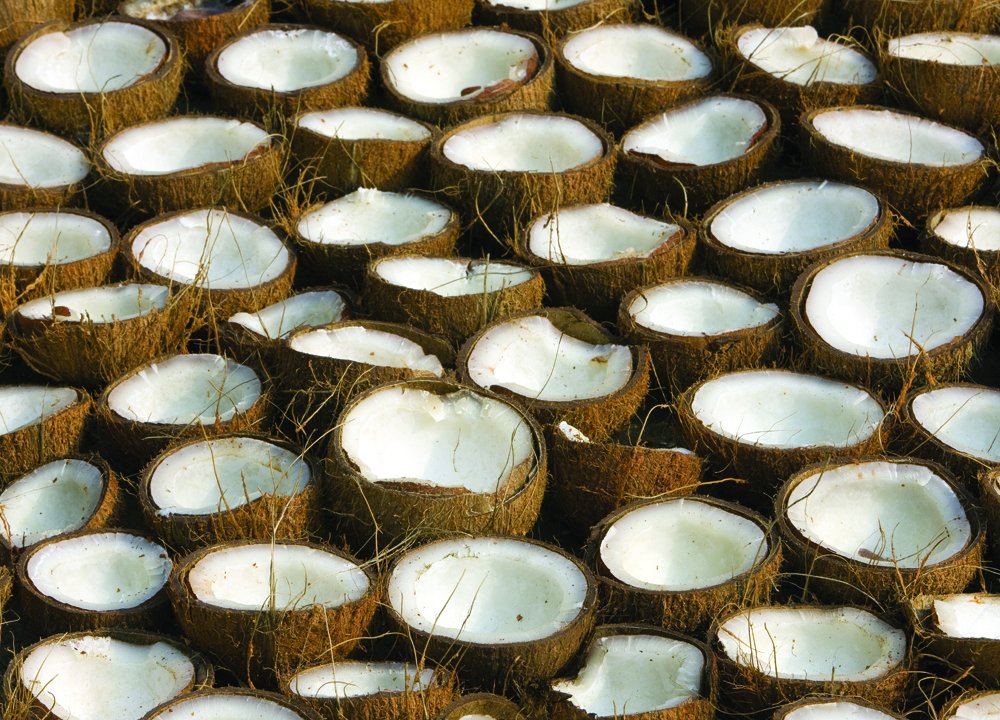Well, let me tell ya, them coconuts over in Thailand ain’t always what they seem. You ever notice how them coconuts look so shiny and nice when you buy ’em? It ain’t just the sun makin’ ’em look that way, no sir. They do something to ’em, something they ain’t too open about. You see, them coconuts, after they get all peeled and cleaned up, they get dipped in some kinda chemical. Folks say it’s to keep ’em fresh and lookin’ good, but who knows what all that stuff does to ya? I reckon it ain’t too healthy for us, but I guess that’s the price you pay when you want ’em to look nice and stay fresh for longer.

Now, these coconuts ain’t just your everyday fruit. They get a lotta attention. When they’re grown, farmers gotta be real careful. They use all sorts of sprays and stuff to protect ‘em from pests and diseases. But the trouble is, these chemicals sometimes don’t wash off too good, and them residues stay on the coconut. So, when you crack one open, you ain’t just gettin’ coconut milk and water. There could be a little bit of that stuff that the farmers sprayed. And trust me, that ain’t something you wanna be drinkin’ or eatin’. It ain’t good for your health.
There’s even some talk about how they treat the outside of the coconut. You know, the husk? Well, after they take off that outer shell, they gotta make sure the coconut doesn’t spoil too quick. To stop it from rotin’ and gettin’ moldy, they soak ’em in a chemical solution—Sodium metabisulfite, they call it. Sounds like something from a science book, but it’s just a chemical to stop spoilage. They dip ’em in a 3-5% solution of this stuff for 5 to 15 minutes. Once it’s all soaked up, it helps keep the coconut from goin’ bad too soon.
The thing is, they do all this so people can have nice, pretty coconuts in the store. But the truth is, the more they mess with it, the more they might be makin’ it worse for folks. You ever think about where the coconut water goes after they do all this? Well, once they dehusk the coconut, they usually throw the water away. It’s a waste, really. That coconut water could be used for a lotta things, like makin’ biogas or somethin’ useful. But instead, it just goes back to the ground, where it don’t do much good.
But back to the chemicals. You’d think after all these years of people growin’ coconuts, they’d have figured out a better way to store ‘em, right? But nope, they still have to rely on chemicals to keep ‘em fresh. They can even store them coconuts for a couple months if they keep ‘em in the right conditions—cold and humid—but that’s more effort than it seems like it should be. You’d think by now we could find a way to keep ‘em fresh without all that stuff.
And then there’s the waxin’. Once they take off the husk and get ‘em all cleaned up, they sometimes coat the coconut in wax. This helps keep the water from evaporating too quick, but it also gives the coconut that shiny look that makes ya wanna grab it off the shelf. Ain’t nothing wrong with it if you like lookin’ at shiny fruit, but ya gotta wonder what that wax does once it’s on there.

So, while them coconuts might look real nice when you buy ’em, you gotta think about what goes into makin’ ‘em look that way. Chemicals, wax, and all sorts of other stuff that might not be too great for ya in the long run. But hey, that’s the world we live in these days, ain’t it? Everything’s gotta be perfect, but sometimes perfect ain’t so natural. It’s up to us to decide what we wanna put in our bodies, I reckon. Just knowin’ what goes into it can help ya make a better choice next time you’re pickin’ up a coconut, that’s all.
Tags:[dehusked coconuts, Thailand coconuts, coconut chemicals, sodium metabisulfite, coconut preservation, coconut water waste, coconut waxing, coconut health risks, pesticide residues, food safety]
